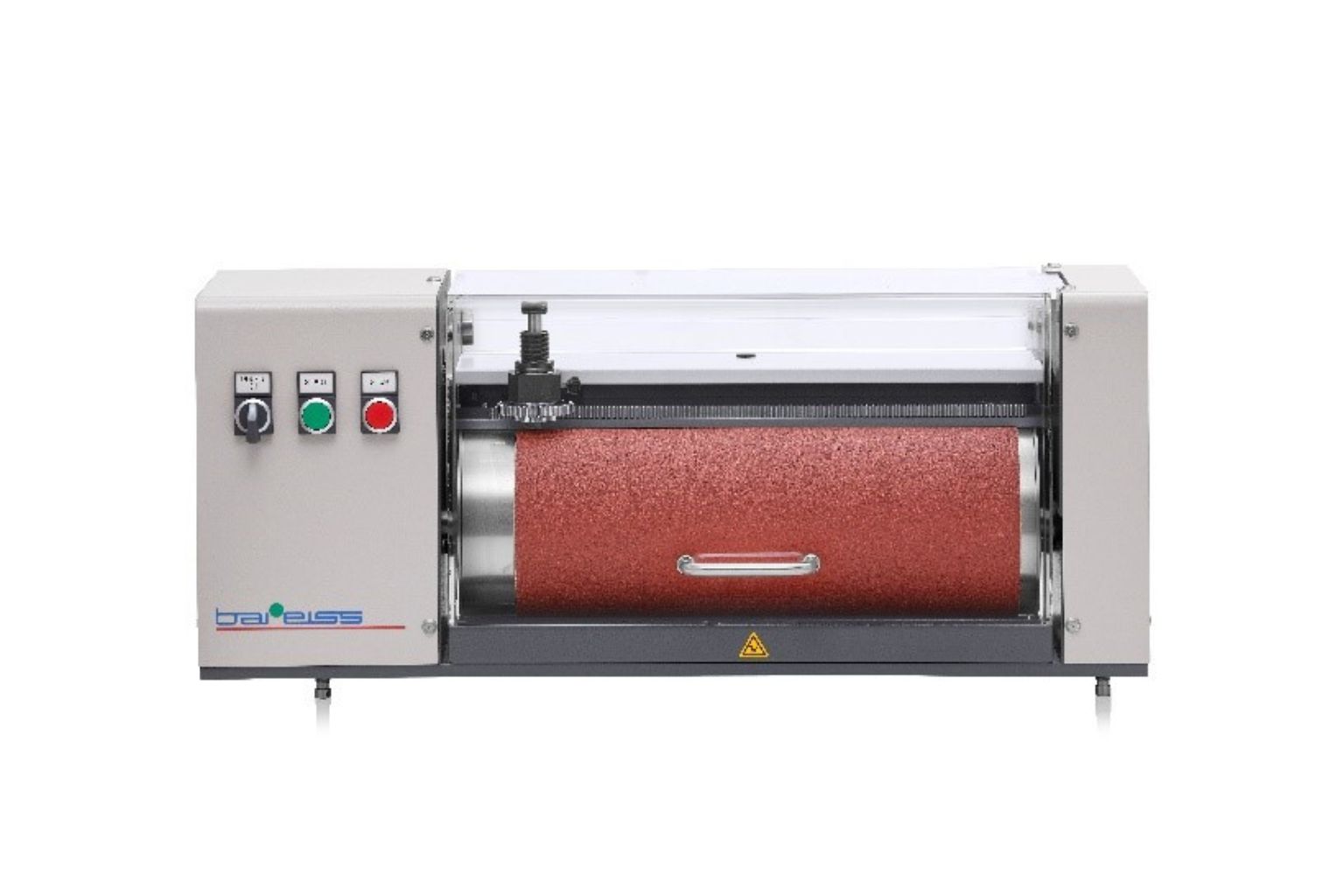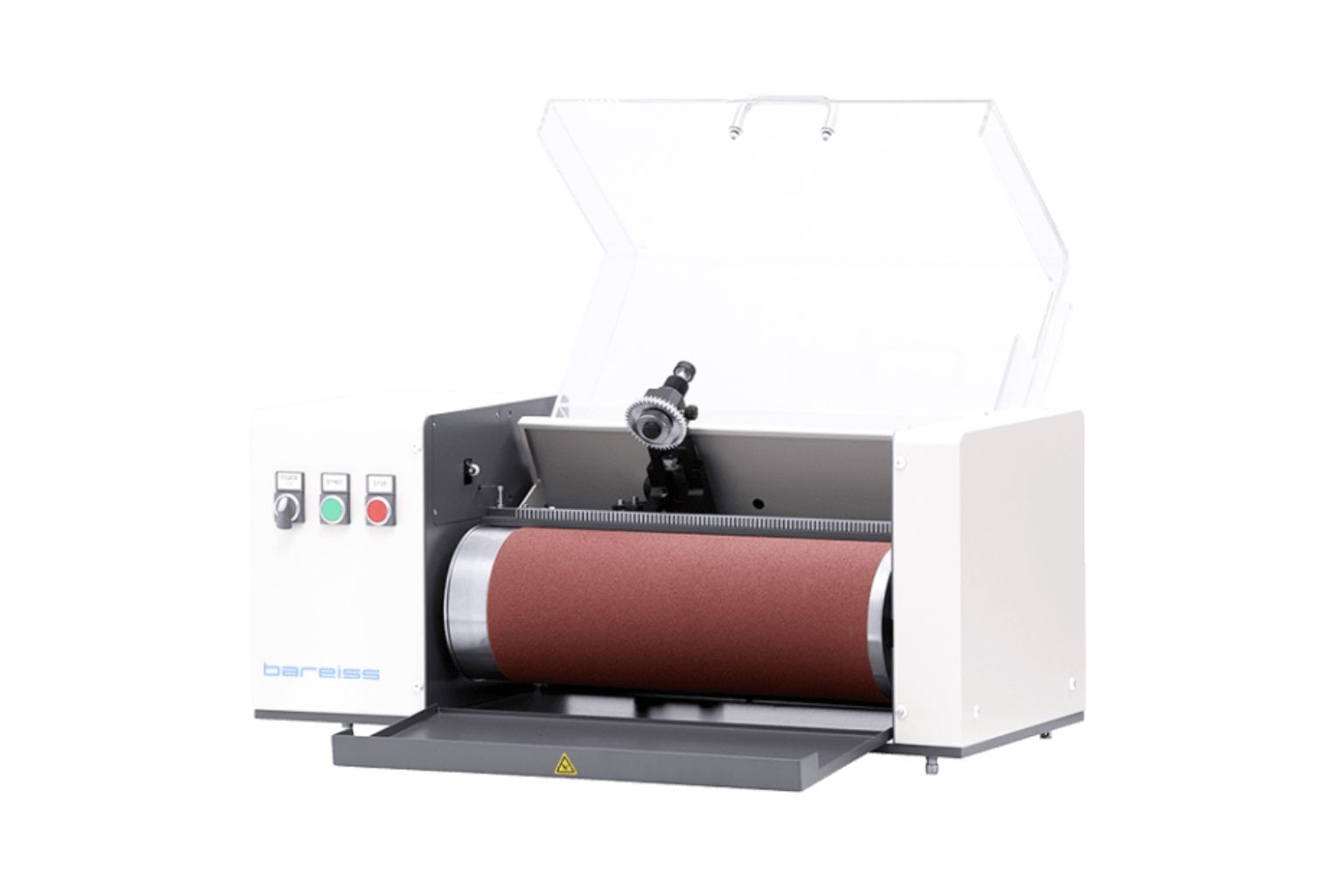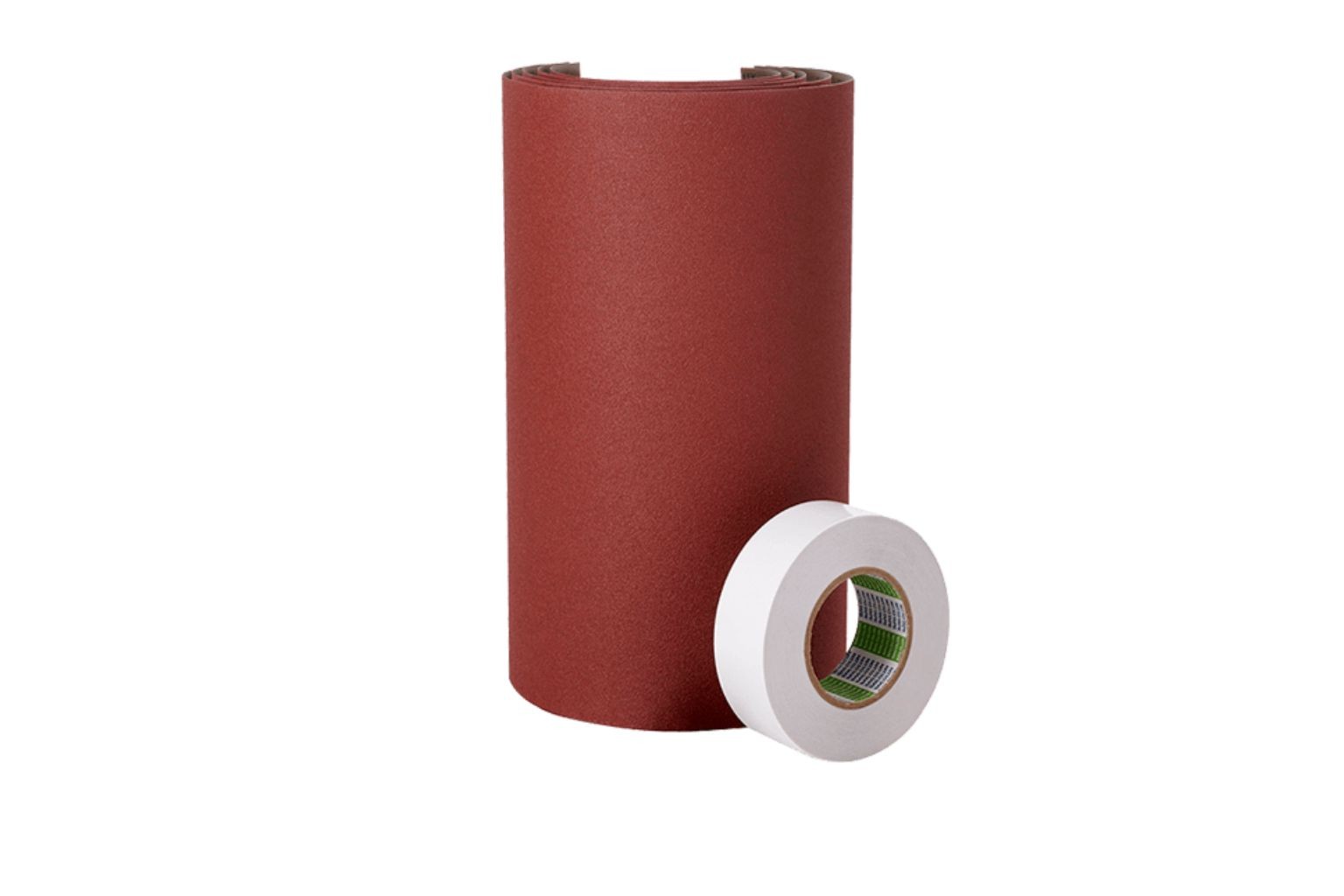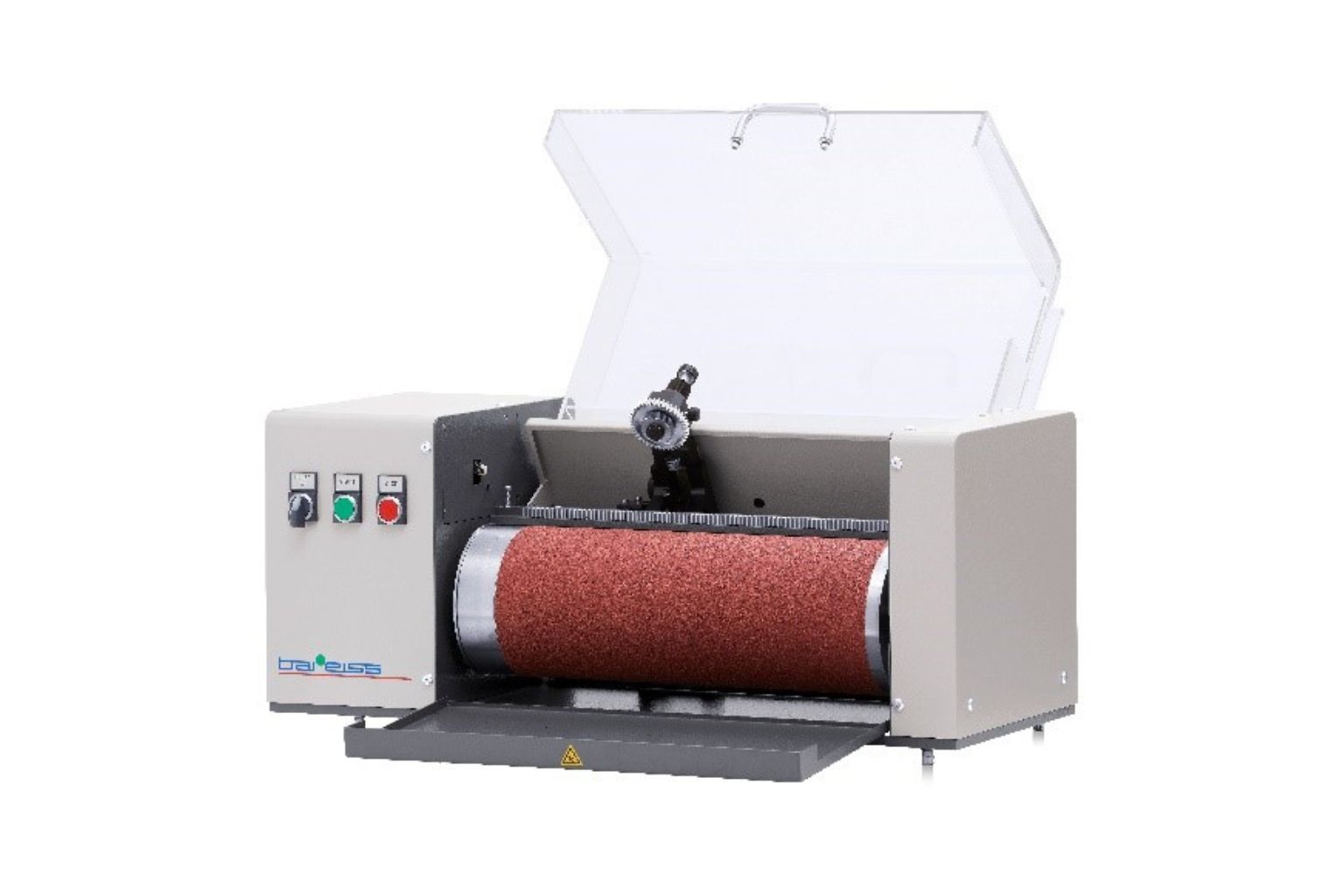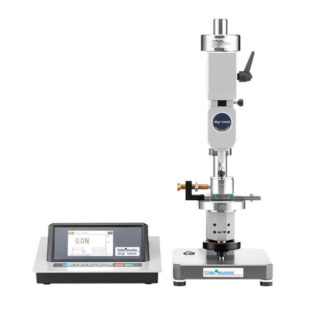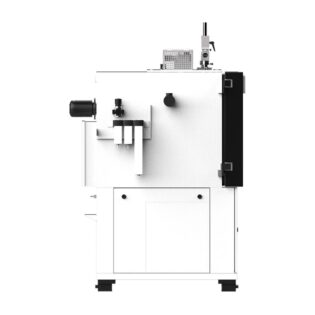Abrasion Testing involves the determination of volume loss due to the abrasive against a test piece when it rubs over a specified grade of abrasion paper. To evaluate the abrasion resistance of materials like tires, conveyor belts, automotive belts, hoses, footwear, or a multitude of other products, we need to test them under abrasive conditions. The actual performance of rubber products during their performance cycle cannot always be predicted and therefore the Abrasion Tester acts as the auxiliary equipment for standard determination of the hardness of elastomers against abrasion.
Model No: |
FZT-BR/AT-1017 | ||
|---|---|---|---|
Brand |
Bareiss | ||
| Applications: | Range from products such as tires, conveyor belts, hoses, footwear, floor covering, etc. | ||
Industries: |
Tires | ||
| Materials: | Tires, conveyor belts, hoses, footwear, floor covering, etc. | ||
| Standards: | DIN ISO 4649, NF ISO 4649, ASTM D 5963 |
Operating Procedure:
1) The abrasion tester is switched on with the POWER rotary switch and the protective hood is opened.
2) The test piece is fixed on the sample holder and the protective hood is closed.
3) The automatic standard abrasion process can be interrupted any time by pressing the STOP button.
4) Start the abrasion process with the START button.
5) After the set abrasion path is traversed, the abrasion tester is switched off automatically, and the protective hood is opened.
6) The sample is taken out from the sample holder is bought back to its base position and the protective hood is closed.
7) Switch off the abrasion tester with the POWER rotary switch after reaching the activated lift and finally, the measuring device moves back to its initial position. The recommended lift is 2.0 mm.
Basic Equipment
A sample holder (rotating) with different loading weights, a rotating cylindrical roller, an emery sheet placed on the roller and an electrical control.
Optional: An automatic vacuum cleaner connection and an optional heating module.
Standards
DIN ISO 4649, NF ISO 4649, ASTM D 5963
ISO 4649 specifies two methods for the determination of the resistance of rubber to abrasion by means of a rotating cylindrical drum device.
Method A is for a non-rotating test piece and method B is for a rotating test piece. For each method, the result can be reported as a relative volume loss or an abrasion resistance index.
Abrasion Tester Standard Fe05000
| Dimensions when packed (WxDxH) | 750 x 650 x 500 mm |
| Weight when packed | approx. 85 kg |
| Dimensions when unpacked(WxDxH) | 780 x 400 x 350 / 750 mm (closed / open) |
| Weight when unpacked | approx. 50 kg |
| Electrical connection data (operation) | 100 - 240 V 50 / 60 Hz 50 VA |
Abrasion Tester Automatic Vacuum Cleaner Connection Fe05000-01
| Dimensions when packed (WxDxH) | 750 x 650 x 500 mm |
| Weight when packed | approx. 85 kg |
| Dimensions when unpacked(WxDxH) | 780 x 400 x 350 / 750 mm (closed / open) |
| Weight when unpacked | approx. 50 kg |
| Electrical connection data (operation) | 100 - 240 V 50 / 60 Hz 50 VA + vacuum cleaner power |
| 100 - 240 V 50 / 60 Hz max. 10 A |
Abrasion Tester Heating Module Fe05000-02
| Dimensions when packed (WxDxH) | 750 x 650 x 500 mm 2100 VA heating operation |
| Weight when packed | approx. 90 kg |
| Dimensions when unpacked(WxDxH) | 780 x 600 x 350 / 750 mm (closed / open) |
| Weight when unpacked | approx. 55 kg |
| Electrical connection data (operation) | 100 - 240 V 50 / 60 Hz 2100 VA |

Technical Data
| Dimensions of the test piece | Ø16 mm x 6 mm to Ø16 mm x 15 mm |
| Span length of the test piece | Maximum 13 mm |
| Clamping force of test piece(standard) | 2.5 N; 5.0 N; 7.5 N; 10.0 N |
| Abrasion path / rotations of the roller | 20 m / 42 R (rotations)- 40 m / 84 R |
| Speed of rotating test piece | 0.9 RPM |
| Speed of roller | 40 RPM |
| Feed | 4.2 mm/R |
| Peripheral speed | 0.32 m/s |
| Angle of inclination of sample holder | 3° |
| Roller diameter | 150 mm |
| Roller width | 460 mm |
We provide Ranges of applications. download the brochure from here
Ranges-of-Applications-and-Technical-Data_FZ_-1 (1)


